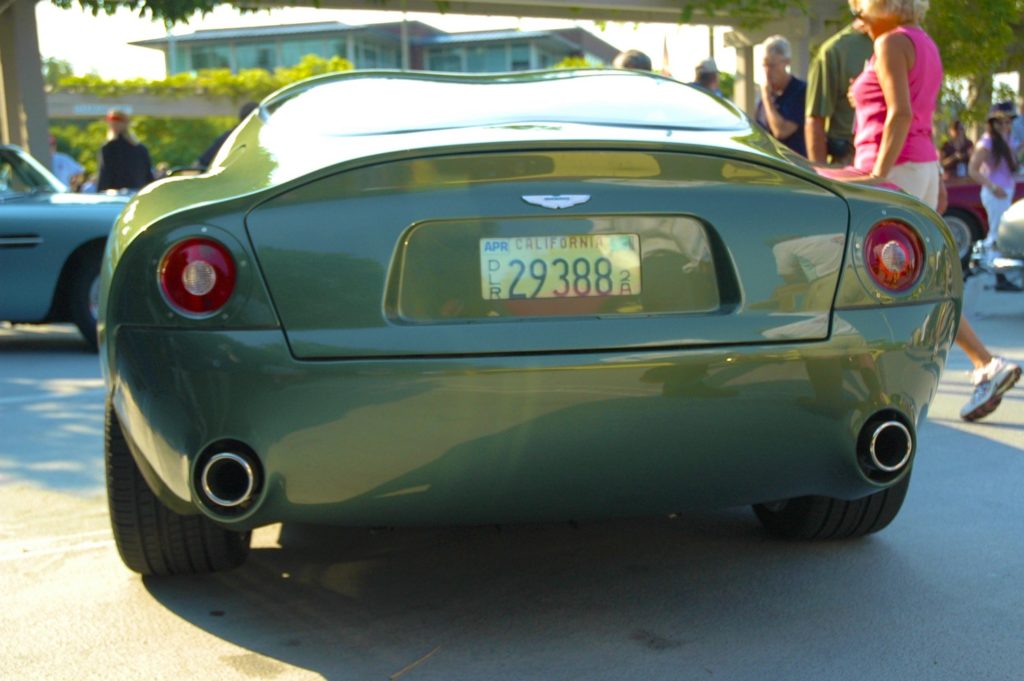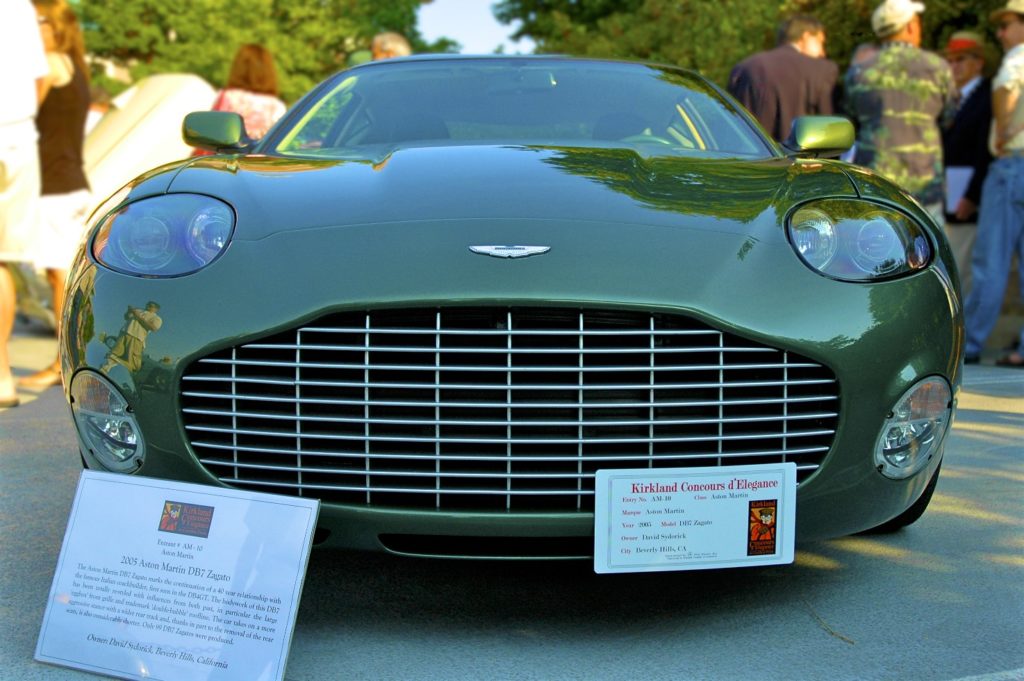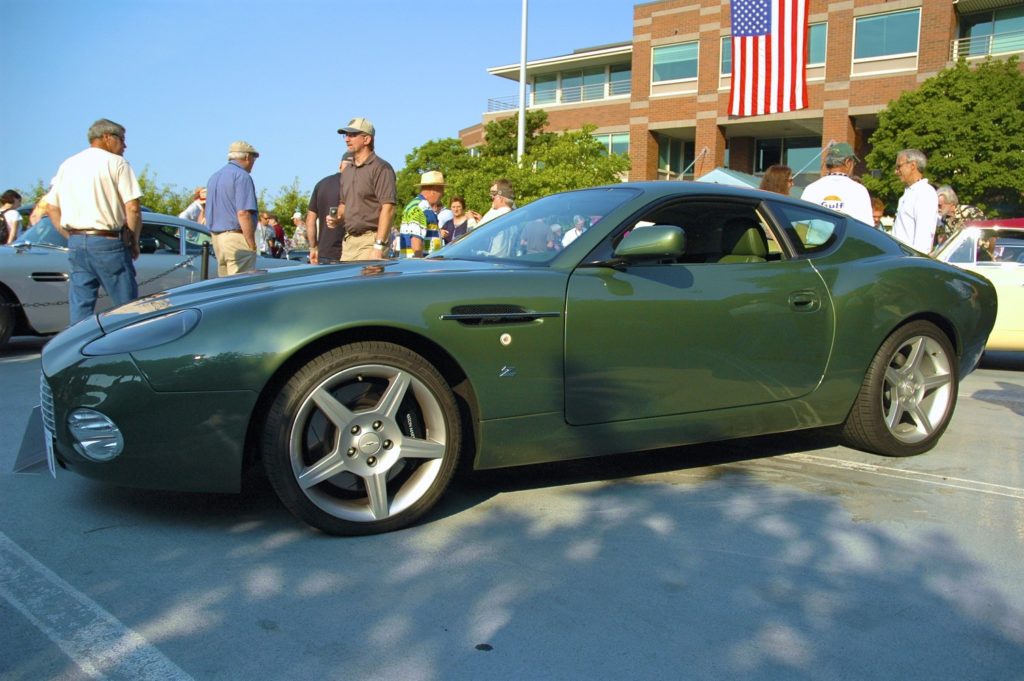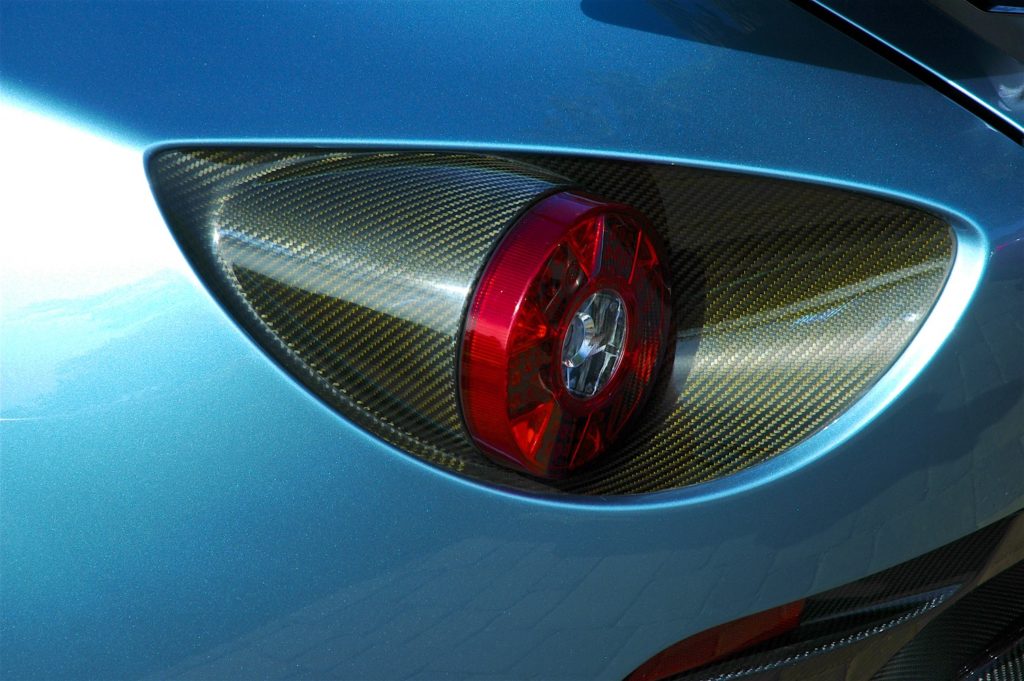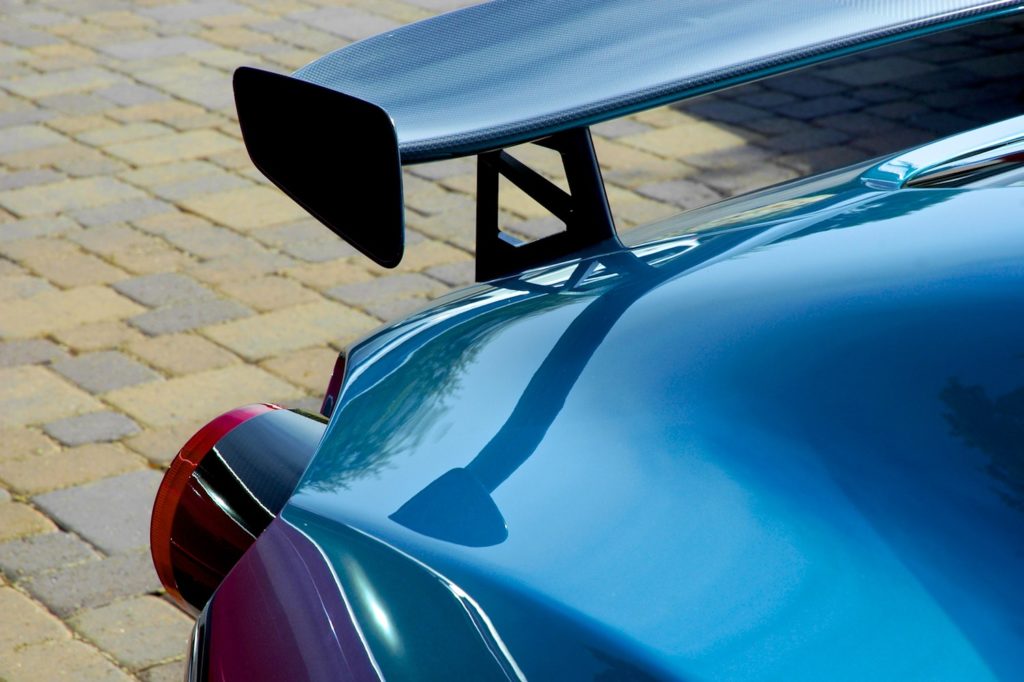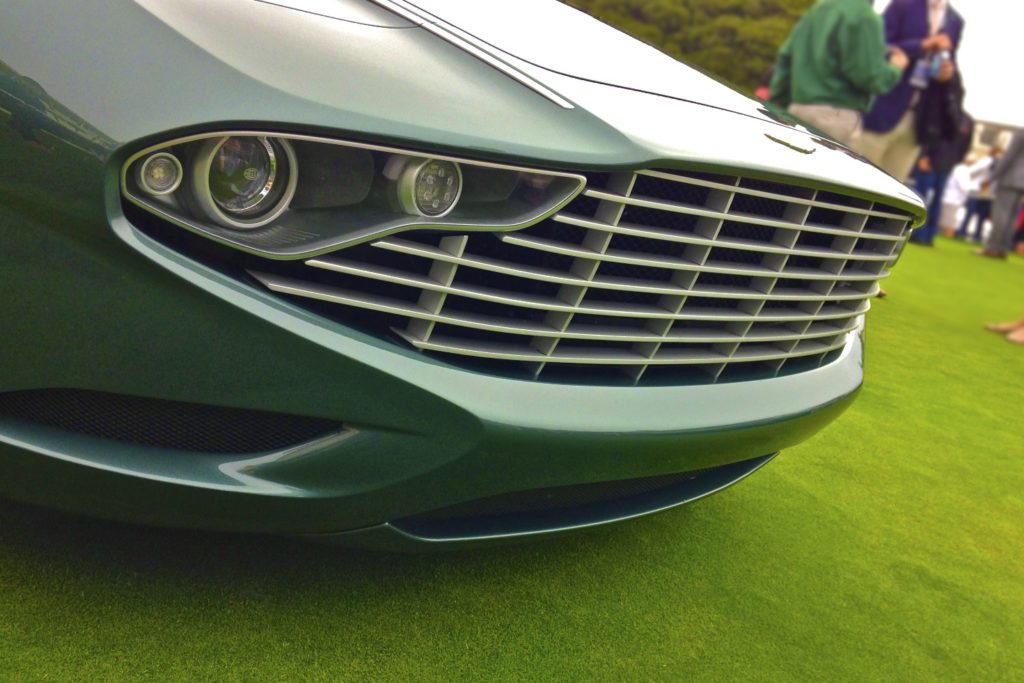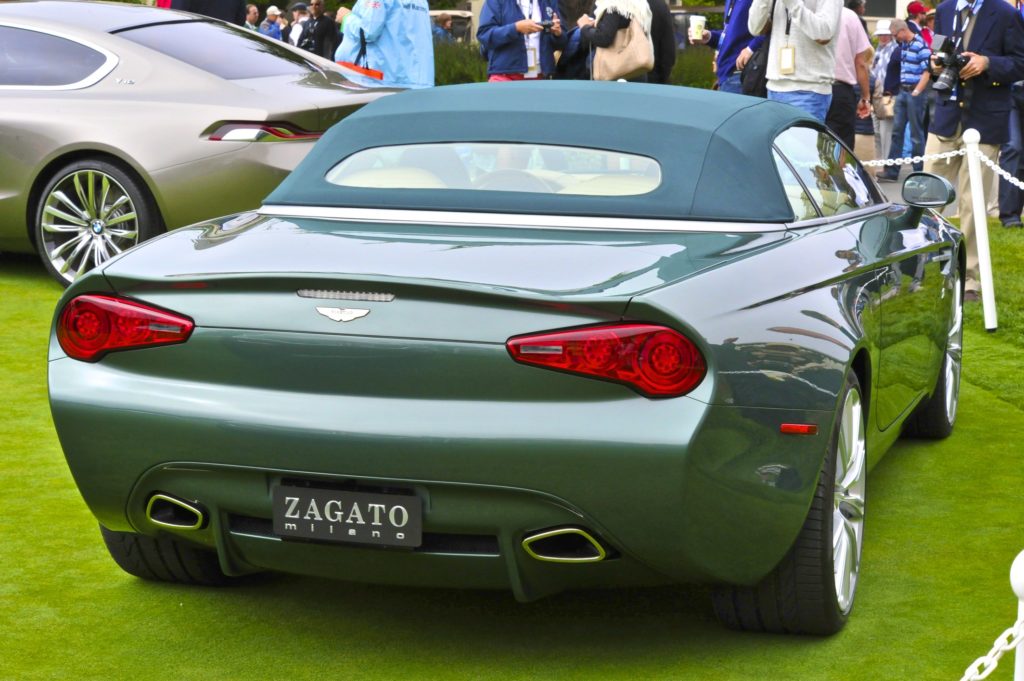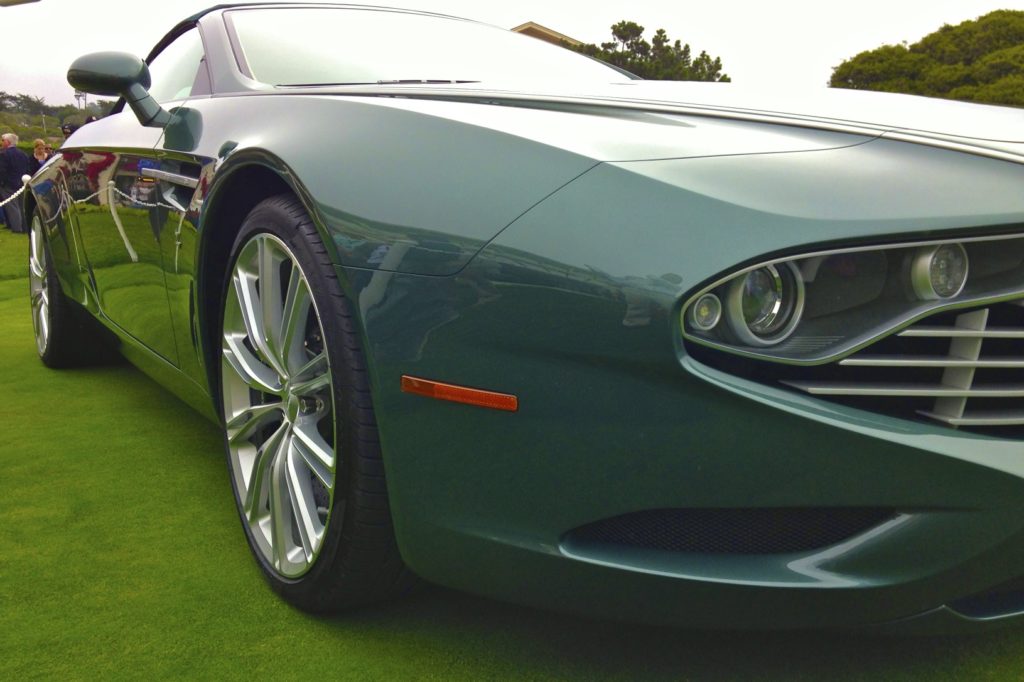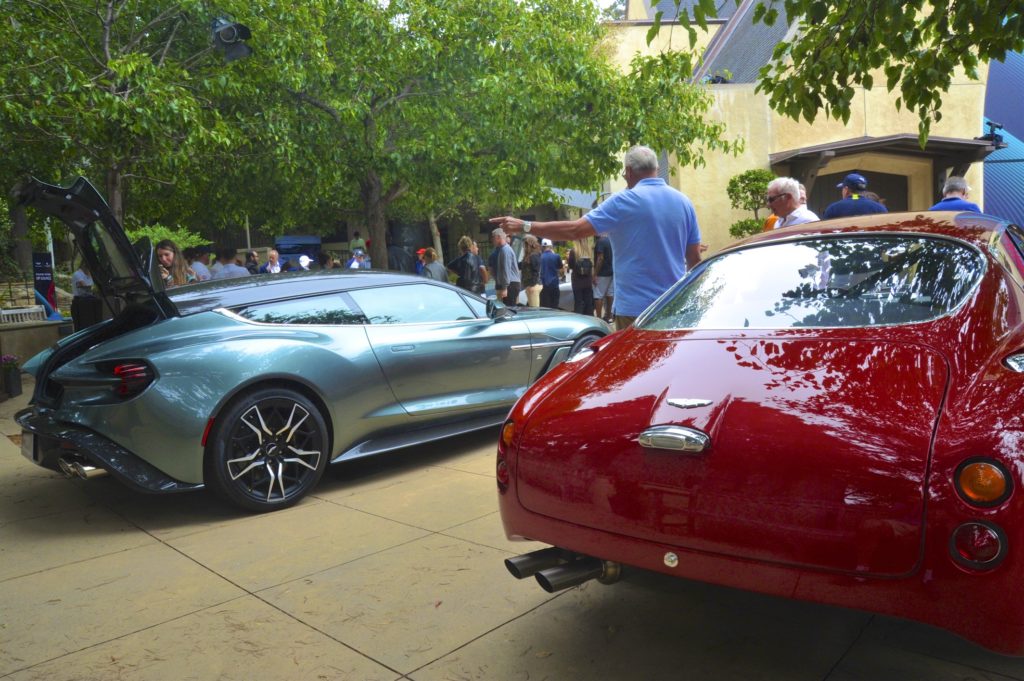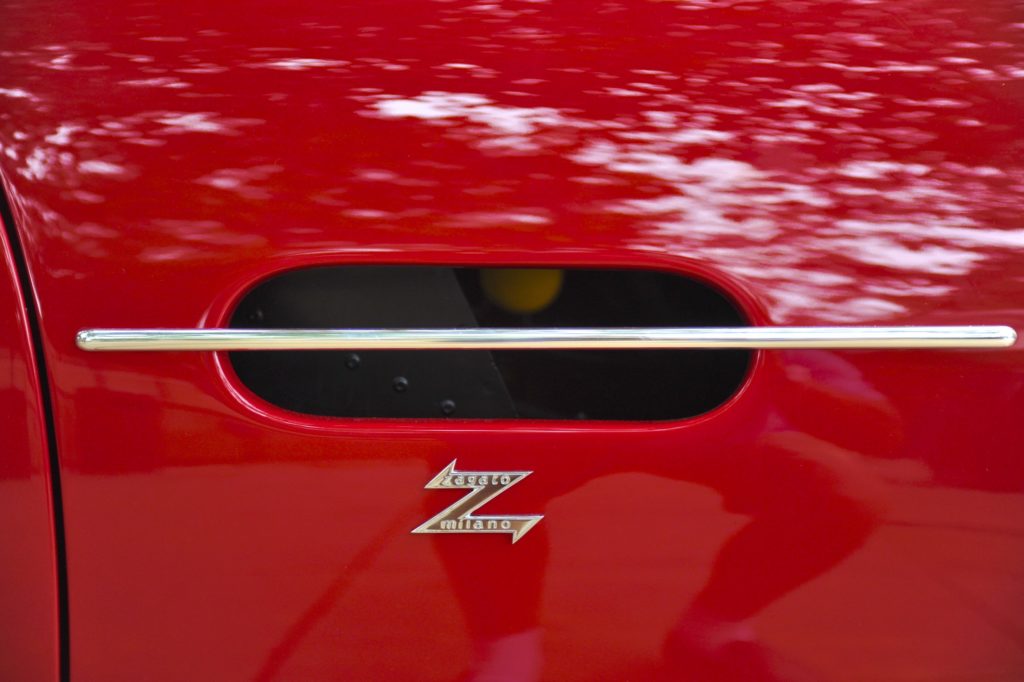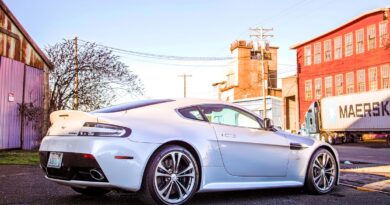The Aston Zagatos
Aston Martin recently celebrated its 60th anniversary with Italian design house Zagato. So let’s take a trip down memory lane and look at some of the examples on which they collaborated. The first and most obvious is the widely recognized, quintessential Aston Zagato, the 1961 Aston Martin DB4GT Zagato.
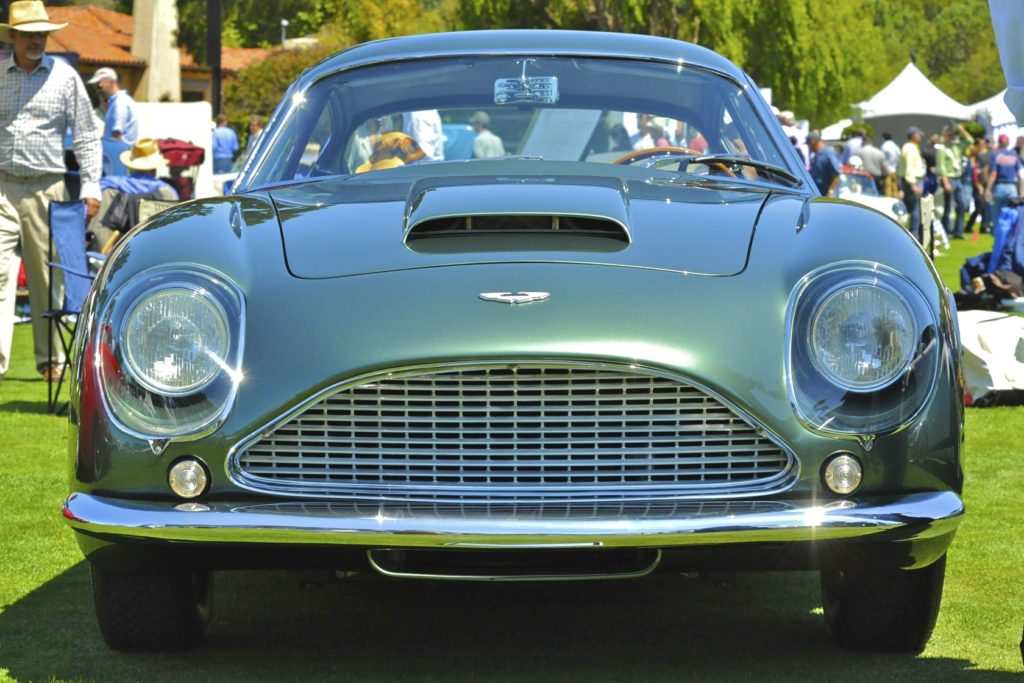
Here are some of the now ten Aston Zagato collaborations from the past sixty years. Only 19 of the DB4GT Zagatos (above) were originally built out of a planned run of 25. They were worth about $2.5 million in 2012, but one sold for $14.3 million in 2015. Including Sanction II (1988) and Sanction III (2000) cars, Aston & Zagato did end up building 25 overall. It was the first collaboration between Aston Martin and Zagato. It boasted 314 HP from an all alloy, naturally aspirated straight 6, producing a 0-60 time of 6.1 sec and a top speed of 154 MPH. Designed by 23-year old Ercole Spada at Zagato, the DB4GT was transformed by replacing steel body components with aluminum, replacing glass windows with acrylic and ditching non-essential items. More than 100 pounds was shaved off the standard DB4GT, itself a lighter version of the DB4.
Four of these cars were built to a lighter Aston DP207/209 spec for racing. “DP” stands for “Design Project.” Essentially, those cars had lighter gauge aluminum bodies with more attention to aerodynamics and different carburetion. The aluminum skins were so thin they could be dented with an index finger.
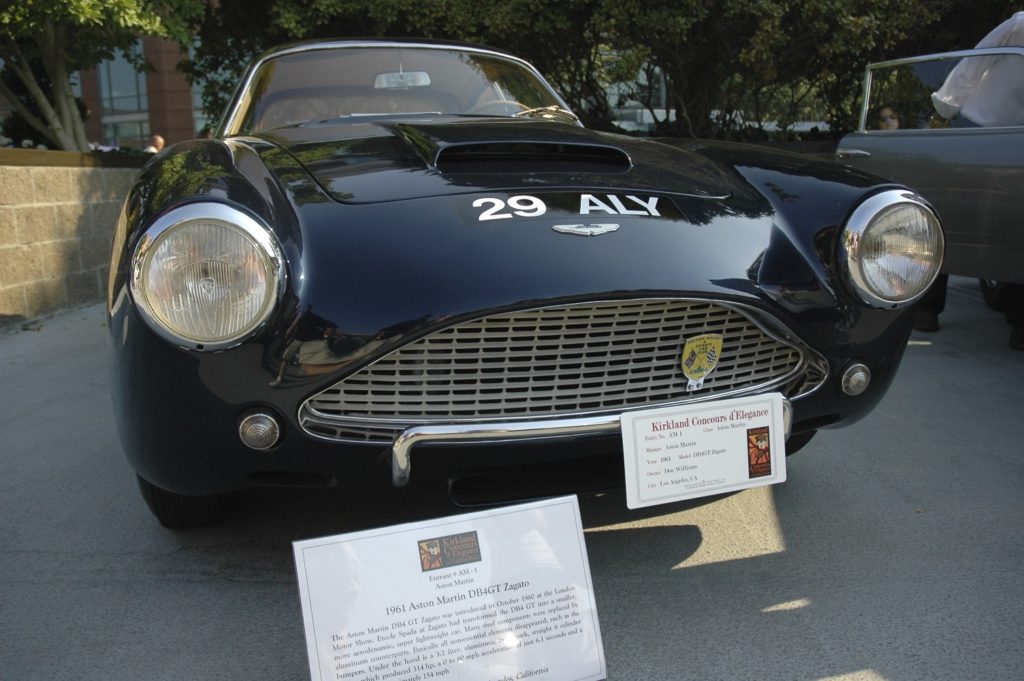
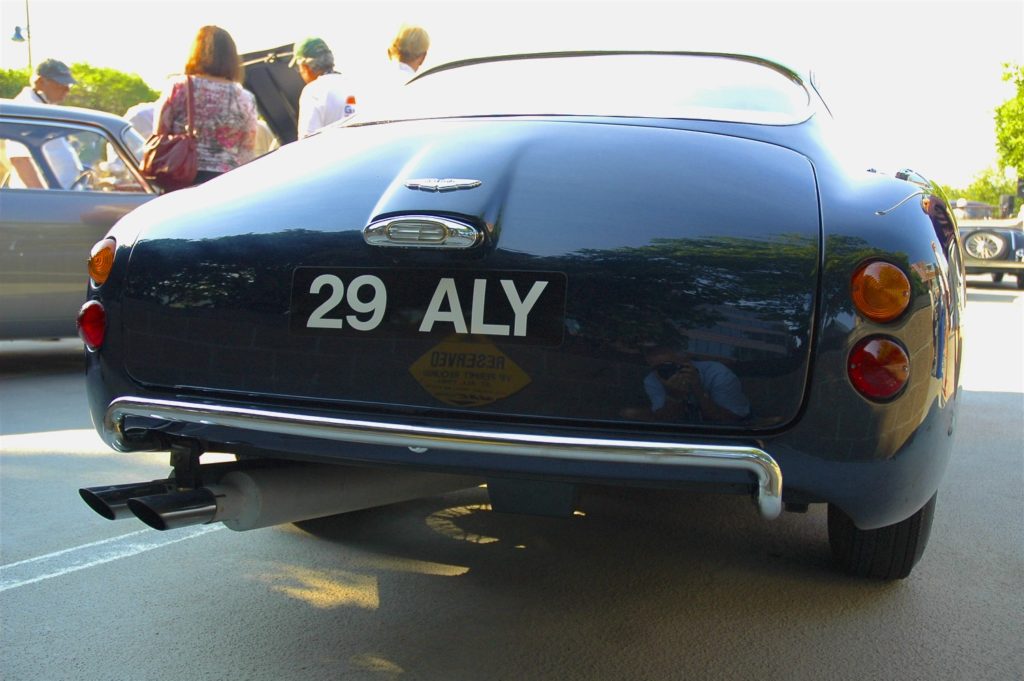
Another DB4GT Zagato spied at the Kirkland (WA) Concours d’ Elegance in 2011
This collaboration was to be followed by other Zagato renditions – in 1986, 87 V8 Vantage Zagato Coupes & Volantes were produced (a car, by the way, that was either loved or hated. I have yet to see one of the boxy examples); in 2003, 99 each of the DB7 Zagato for Europe and the DB AR1 for America; and in 2011, 101 each of the V12 Zagato. In 2016, Aston announced the Vanquish Zagato Coupe and Volante models, each limited to 99 copies.
The 2004 Vanquish Zagato Roadster was a Zagato concept shown at the 2004 Geneva Car Show. Built from the last pre-production Vanquish coupe, this one-off in Zagato Blue and Claret Red not only features the double bubble glass tonneau behind the front seats and round taillights foreshadowing the 2005 Aston DB7 AR1, but also incorporates a self-deploying soft top. And, it has a removable hard top to replace the bubble glass! It is rarely seen in public, so this was a treat at the 2013 Quail. The car was displayed by then owners Cynthia & Robert Lepofsky.
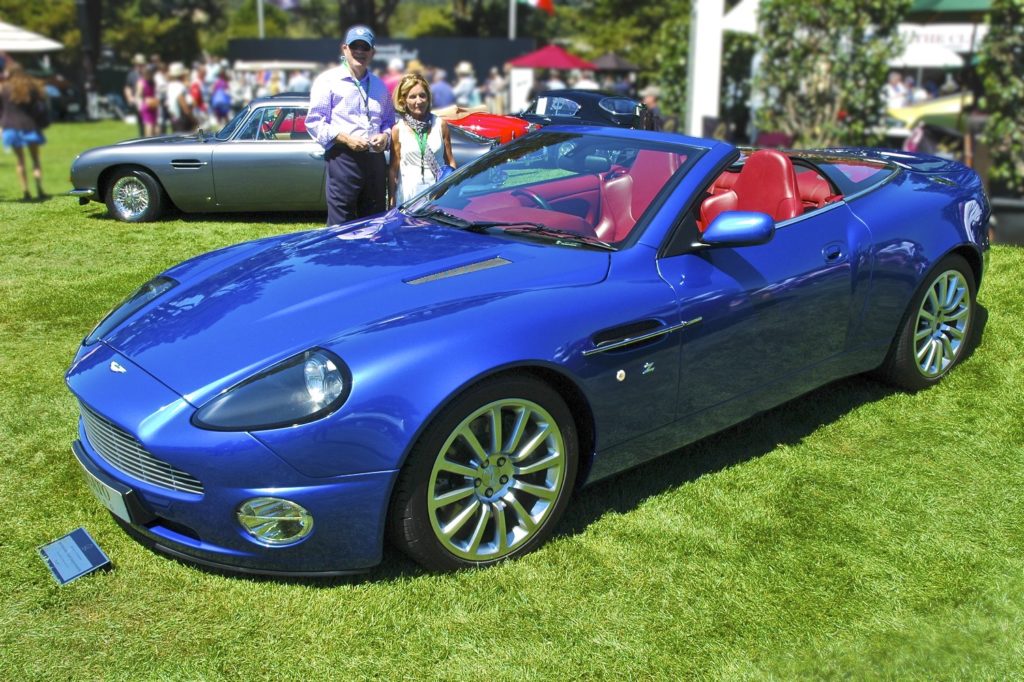
Zagato chief designer Nori Harada, who also designed the beautiful Aston Zagato Centennial cars, and Peter Hutchison, Aston design manager, collaborated on this Roadster. It was even wind tunnel tested to create a buffet-free cabin. Critics loved it, with Winston Goodfellow remarking, “I would immediately line up to buy it…. I have always been a huge fan of the Vanquish, and Zagato’s Roadster takes it to another level.” But, despite several order requests, Aston CEO Ulrich Bez claimed they had too much on their plate to consider building it. Reportedly there were also issues with removing the roof and making the car safe in a rollover.
Zagato nevertheless displayed the car at Pebble Beach in 2004, and that is where Robert Lepofsky first saw it. After extended negotiations, he was able to re-import the car through Stephen Serio’s AM New England dealership. It is interesting to note Steve is a former professional photographer educated at the prestigious Rochester Institute of Technology. He still takes all the marketing pictures of the vintage cars he sells at the dealership.
Okay, back to the car. The Zagato is not street legal in the U.S., so its Massachusetts owner is limited to ‘show and display’ regulations limiting the car to 2,500 miles a year. Even now, the car still has only 13,000 miles on it, and those supposedly include the development miles put on the car as a Vanquish pre-production prototype.
Having to make room in his collection, Robert sold the car at the Bonhams Quail Auction in 2015 for $660,000. I’d say that was an excellent buy for a one-of-a-kind Aston Martin as beautiful as this one.
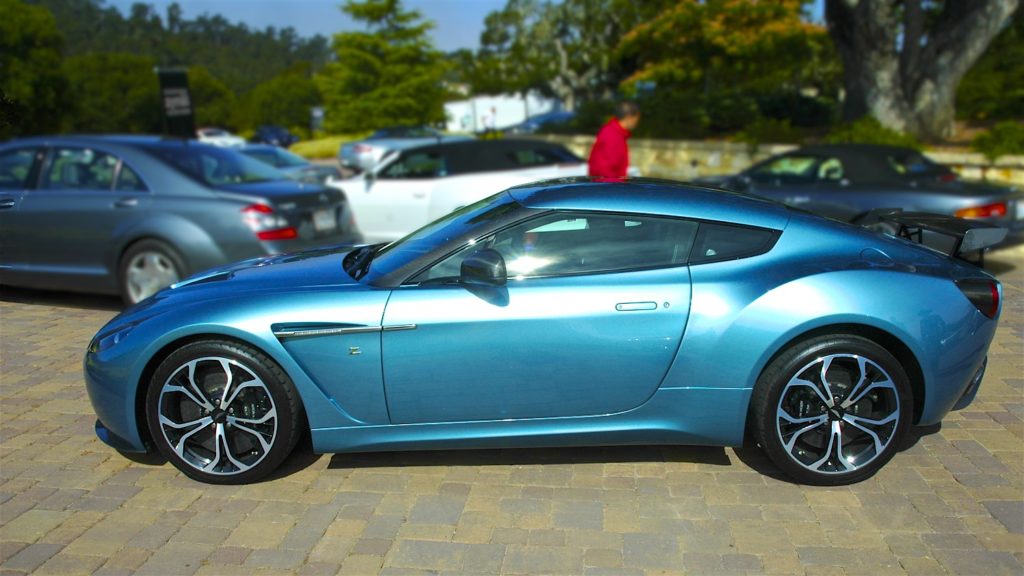
Just 101 of these fantastic cars were authorized to be built but only 65 were made. It took 2,000 man-hours to build one, and cost $500,000 new. Essentially, it is a hand-formed, aluminum re-skinned V12 Vantage. This project of the Aston/Zagato union was actually designed by AM’s Marek Reichman to mark the 50th anniversary of the AM DB4GT Zagato. Only two made it to the U.S. They are not street legal here, so this Zagato is limited to 2,500 miles a year as a show car. But, I’d take one anyway….
This is one of those cars that doesn’t disappoint in the flesh. In fact, it just all comes together when you walk around it. The usual Zagato design cues are all there – the double bubble roof, the large mouth grill, the circular taillights. It’s wonderful. I think that’s what it is about 3 dimensional, kinetic sculpture – there’s no way to fully appreciate it except in person.
It was unveiled at the 2011 Concorso d’Eleganza Villa d’Este in Lake Como, Italy where it won the Design Award for Concept Cars and Prototypes. Two V12 Zagatos, nicknamed ‘Zig’ and ‘Zag,’ also competed at the 2011 Nurburgring 24-hour race, finishing 5th and 6th overall. In 2012, ‘Zig’ finished second in class at the Nurburgring 24-hours. As seems to have become an Aston Martin tradition, CEO Dr. Ulrich Bez drove the car as part of the driver team in both those races. Recent former CEO Dr. Andy Palmer and current Chief Creative Officer Merek Reichman also race Astons to promote their cars. Wouldn’t it be fun to get to race the cars you design? Merek has a pretty special job.
The DB9 Spyder Zagato Centennial is a one-off car commissioned by American Aston Martin collector Peter Read in celebration of Aston’s 100th anniversary. Peter also happens to own the British Racing Green Zagato featured at top.
This car was displayed on the concept lawn at the 2013 Pebble Beach Concours. Read later auctioned it off in 2015 for $660,000. A 2013 DBS-based Centennial Coupe was also built as a one-off for a young Japanese entrepreneur who preferred to remain anonymous. Lastly are pictures of the Continuation cars and the spectacular 2019 Shooting Brake version built by Zagato.
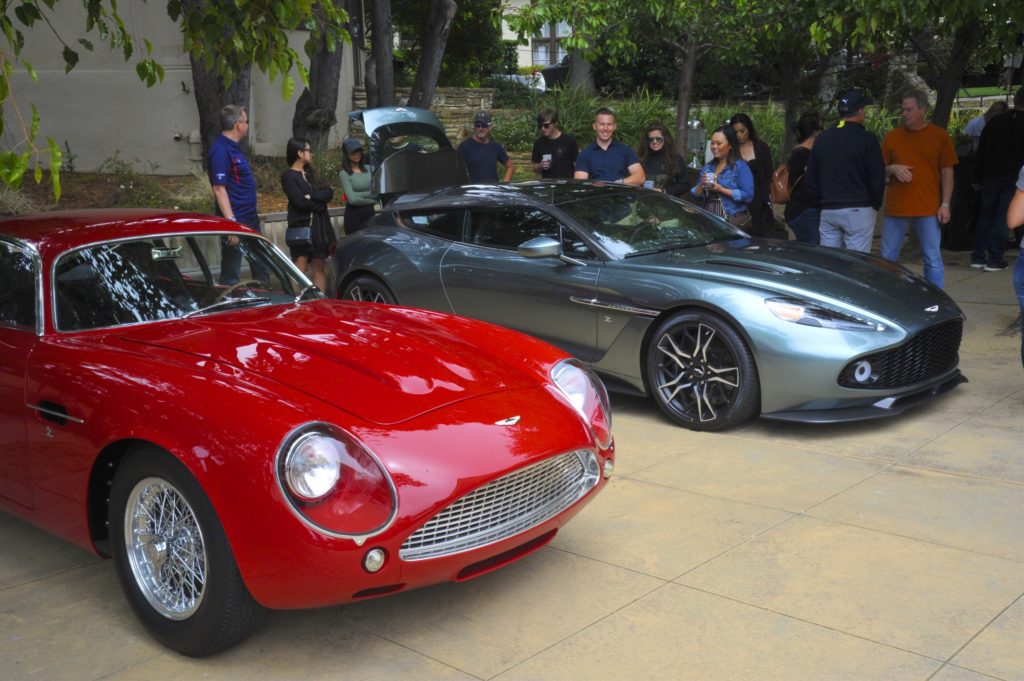
The Continuation DB4GT Zagato can only be purchased when paired with the new DBS GT Zagato. And, in a nod to the original DB4GTZ, only 19 pairs of the DBZ Centenary Collection were sold. Price? A cool $6 million. Though some of the panels are pre-formed, the DB4GT Continuation is still built largely by hand, just as the originals, at the Newport Pagnell facility now known as Aston Martin Works. 4,500 painstaking hours are invested into making each one of these ultimate retro go machines, but it also benefits from modern engineering to produce a car superior in many ways to the original while still preserving its native character. Improved corrosion resistance and paints along with modern metallurgy provide better materials and finishes.
While a straight-6 faithful to the Tadek Marek design occupies the engine bay, it boasts a full liter more of displacement and about 75 more horses, topping out around 400 hp. Since these cars are not intended to be street legal, they also incorporate a full roll cage, fire extinguisher system and carbon fiber seat buckets.
As for the DBS Zagato Shooting Brake, it is one of 99 of those beauties that go for about $1 million each. It is one of four Zagato interpretations of the 2nd generation Vanquish that include a Coupe, a Volante, and a Speedster. All but the Speedster will have production runs limited to 99 cars. The Speedster will only have 28 copies. With the venerable 5.9L naturally-aspirated V12 generating 595 hp the shooting brake hits 0-60 in just 3.5 seconds on its way to 199 mph.
As for its name, Shooting Brake is a decidedly early 19th century British colloquialism; it derives from the hunting customs of earlier days when a special vehicle was used to carry the guns and the dogs. The term Brake presumably comes from the description of the chassis or wagon used to break-in horses. The American equivalent, naturally enough, is the station wagon. Where did station wagon originate? Ah, I think that’s a story for another day.


